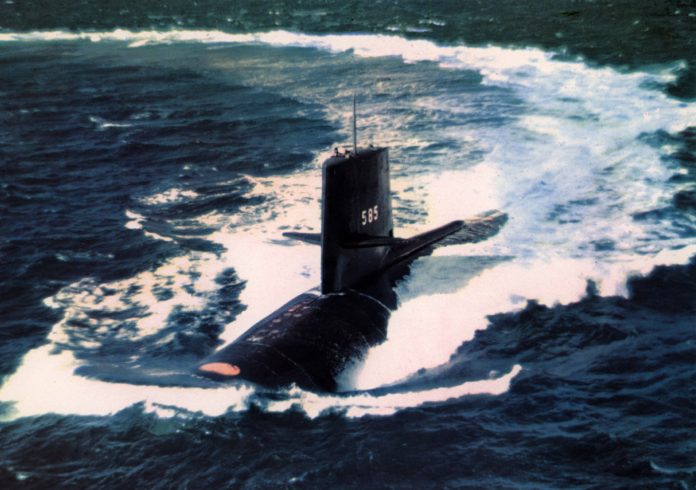
By Stephan Frühling*
No other weapon system embodies the menacing, but also out-of-sight, presence of nuclear weapons better than the stealthy nuclear-powered ballistic missile submarines (SSBNs) that have, for six decades, ceaselessly prowled the world’s cold ocean depths, waiting for an order that has never come. SSBNs on continuous at-sea deterrence missions remain the mainstay of the nuclear forces in the United States and France, and the sole platform carrying British nuclear weapons. Despite Russia’s significant investment in road-mobile missiles, SSBNs also remain an important element of its nuclear forces.
In Asia, however, nuclear-armed submarines are a newer phenomenon. China has had a longstanding interest in developing SSBN technology, but has only in recent years put them into service, in numbers comparable to Britain’s and France’s. Israel has reportedly fielded nuclear-armed (cruise) missiles on its conventionally powered submarines, and India, Pakistan and North Korea have also all shown an interest in moving nuclear weapons under the sea. As these countries’ programs mature, undersea nuclear deterrence will cease to be a preserve of the major powers. The relevance of nuclear-armed submarines for strategic stability in the Indo-Pacific area will thus increase—but what will their impact be?
A common idea in the international commentariat on nuclear weapons and international affairs is that strategic stability could be ‘assured’ by ‘mutually assured destruction’, based on a relatively small number of large-yield, survivable warheads, such as those carried on an SSBN. But while using submarines to strike the land promises survivable nuclear forces, it also provides long reach and the ability to conduct surprise attacks with short warning, and from unexpected angles—factors much less prone to promote stability. Indeed, the latter two considerations were particularly important for the development and geographic deployment of SSBNs during the Cold War, especially by the Soviet Union. They may be so again as countries in Asia look to overcome the missile defence capabilities fielded by the United States and its allies.
The survivability of SSBNs has also recently been called into question by many commentators, especially in the debates on the replacement of the Trident nuclear submarines in the United Kingdom. A confluence of new technologies, such as unmanned vehicles and big-data analytics, with improved sonar, signals and imagery sensors, and the potential for completely new sensing technologies based on, for example, quantum effects, may render the oceans ‘transparent’ to anti-submarine forces.
The historical record on the vulnerability of SSBNs is already more ambiguous than often acknowledged in these debates. Technology is but one factor influencing the survivability of SSBNs, which has historically differed widely for different countries based on their geographic situation and adversary capabilities.
During the Cold War, the US developed long-range passive sonar systems that could track specific tonal frequencies of Soviet submarines in the North Atlantic and Pacific oceans. These systems made Soviet undersea capabilities far more vulnerable than realised by the public at the time and, until the 1970s, even by the Soviet Union. Insofar as there was an undersea ‘arms race’, it occurred not between adversaries’ nuclear forces, but between Soviet SSBNs and US anti-submarine warfare (ASW) forces.
In this and future contests, geography remains a central factor, because it conditions the ability of countries to make use of (or counter) new ASW technologies that might increase the risk to SSBNs. Moreover, only the US and Russia openly seek the ability to hold other countries’ nuclear forces at risk as part of their deterrence posture, and hence have an operational need to counter adversary SSBNs.
There are also other ways of protecting SSBNs than relying on stealth alone. Once the Soviet Union realised that its SSBNs were vulnerable and that the range of its submarine-launched missiles allowed it to target the continental US from the Arctic Ocean, it began to confine its SSBN deployments to ‘bastions’ in the Barents Sea and Sea of Okhotsk that were actively defended against allied submarines by the Soviet navy and by land-based aircraft.
But if the survival of SSBNs depends not on stealth but on one’s own defensive ASW capabilities to protect them from adversary hunter–killer submarines, the implications of radical improvements in ASW for SSBN survivability and crisis stability also become less clear-cut. Indeed, this dynamic may in fact make SSBNs more survivable, not less—if at the cost of significant investment in defensive ASW forces—such as that which we might now see underway by China in the South China Sea.
Whether the increased deployment of SSBNs in the Indo-Pacific will thus be stabilising or destabilising—in arms competition as well as in crises and war—remains an open and important question for regional security. Given the multiple centres of power in the Indo-Pacific, its connected conflict dyads, and its regional order that lacks both the informal rules and clear dividing lines of the Cold War, conceiving of a regional concept for ‘stability’ is fraught in general.
When assessing the current and future impacts of SSBN technology and deployments on strategic stability in the Indo-Pacific, we thus need to look beyond superficial readings of Cold War history that equate SSBN forces with a supposedly stabilising way of deploying nuclear forces as a secure second-strike capability—for they may be neither intended for second strike, nor particularly secure.
Rather than being a technologically deterministic relationship, the consequences of changes in ASW technology and of the deployment of SSBNs in the region will reflect the particular geographic and strategic circumstances of each adversarial dyad, and defy easy generalisation.
This piece was produced as part of the Indo-Pacific Strategy: Undersea Deterrence Project, undertaken by the ANU National Security College. This article is a shortened version of chapter 3, ‘SSBN, nuclear strategy and strategic stability’, as published in the 2020 edited volume The future of the undersea deterrent: a global survey. Support for this project was provided by a grant from Carnegie Corporation of New York.
8Stephan Frühling is a professor in the Strategic and Defence Studies Centre of the Australian National University.



